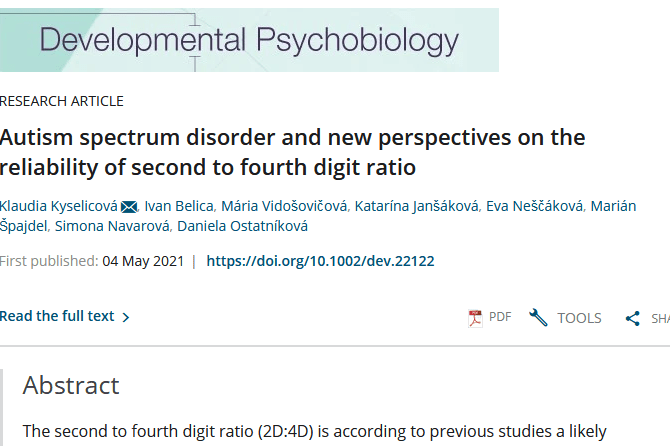
AUTHORS: Kyselicová, K., Belica, I., Vidošovičová, M., Janšáková, K., Neščáková, E., Špajdel, M., Navarová, S. and Ostatníková, D.
ABSTRACT: The second to fourth digit ratio (2D:4D) is according to previous studies a likely biomarker for prenatal testosterone exposure and its effect on the human brain. It was found to be linked to autism spectrum disorders (ASD). Recently, 2D:4D raised a lot of questions with regard to its stability and autism-related behaviors. Here, we present a cross-sectional study of 2D:4D in boys (N = 91, mean age 7.63) and adults (N = 36 mean age 22.8) with ASD as well as neurotypical students, 506 participants in total. Digit ratio was assessed by taking measurements from digital scans, compared between groups and correlated with the autism quotient. Significant differences were found in the digit ratio of children and adults. Both girls and boys had 2D:4D ratio lower than women and men, both on the right (p = 0.000 in females, p = 0.000 in males) and left hand (p = 0.018 in females, p = 0.011 in males). No significant differences were found in digit ratios between neurotypical subjects and those with ASD nor was there a relationship with the reported autistic traits, which leads us to question the reliability of 2D:4D and its relation to ASD.
Dev. Psychobiol. 2021 Sep;63(6):e22122.


